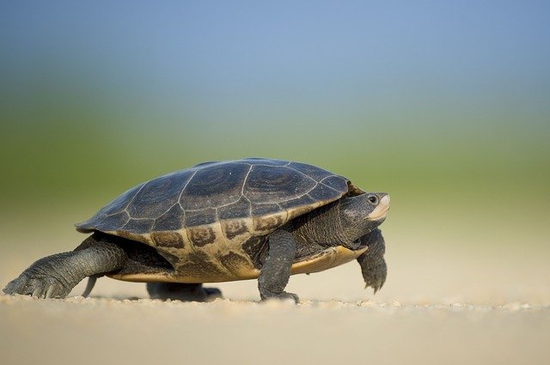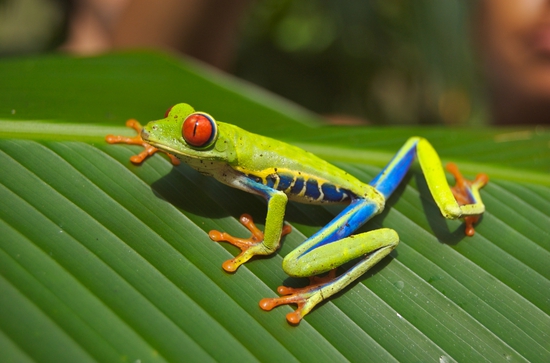
Which animals live in water
which animals live in water
1. Hippopotamus

- The hippopotamus is a mammal.
- After the elephant and rhinoceros, the hippopotamus is the third-largest type of land mammal and is the heaviest extant artiodactyl (in the traditional, non-cladistic sense of the term, excluding cetaceans).
- If they stay too long on dry land on a hot day, they quickly dehydrate.
- The hippo is among the most dangerous animals in the world due to its highly aggressive and unpredictable nature.
- Hippos have barrel-shaped bodies with short legs and long muzzles.
2. Crocodile
/https://tf-cmsv2-smithsonianmag-media.s3.amazonaws.com/filer/02/2c/022ca75e-7989-446f-9b24-97ad9356b177/nile-crocodile-245013_1280.jpg)
- Crocodiles (family Crocodylidae) or true crocodiles are large semiaquatic reptiles that live throughout the tropics in Africa, Asia, the Americas and Australia.
- Some kinds of crocodile live in salt water and others live in fresh water.
- heir movement in the water is powered by their tail.
- However, they have many similarities in these areas as well. Many species are at the risk of extinction, some being classified as critically endangered.
3. sea otter
:format(jpeg)/cdn.vox-cdn.com/uploads/chorus_image/image/32405217/3989373620_f46cb48a14_o.0.jpg)
- Otters are part of the mammal family called mustelids, which includes ferrets, badgers, minks and weasels.
- The sea otter inhabits nearshore environments, where it dives to the sea floor to forage.
- For these reasons, the sea otter remains classified as an endangered species.
- The sea otter displays numerous adaptations to its marine environment.
- They are social, and play with each other, chasing or sliding down river banks or snow.
4. water snail

- Snails belong to a family of animals called molluscs.
- Freshwater snails are gastropod mollusks which live in fresh water.
- At least 33–38 independent lineages of gastropods have successfully colonized freshwater environments.
- The biggest of all snails is an Australian sea snail that can grow to a length of over 77 cm and a weight of 18 kg.
5. Seahorse

- A seahorse (also written sea-horse and sea horse) is any of 46 species of small marine fish in the genus Hippocampus.
- They lack the caudal fin typical of fishes.
- They are unique in appearance, with their horselike head, prehensile tail, independently moving eyes, and brood pouch.
- Seahorses are rather immobile, swimming more slowly than other fishes.
- These plants provided seahorses with useful hiding places to avoid enemies and to capture unsuspecting prey, and ancestors of the seahorse evolved to maximize the opportunities offered by this new habitat.
6. penguin
- They live almost exclusively in the southern hemisphere: only one species, the Galápagos penguin, is found north of the Equator.
- They are about 71 – 76 cm tall and weigh about 4.5 kg and are the most numerous of penguins, with a population of about 12-13 million, found only on the Antarctic Peninsula and the sub-Antarctic islands.
- Although almost all penguin species are native to the southern hemisphere, they are not found only in areas with cold climates, such as Antarctica.
7. Octopus

- Octopus, plural octopuses or octopi, in general, any eight-armed cephalopod (octopod) mollusk of the order Octopoda.
- Octopuses appear in mythology as sea monsters like the kraken of Norway and the akkorokamui of the ainu, and probably the gorgon of ancient Greece.
- The typical octopus has a saccular body: the head is only slightly demarcated from the body and has large, complex eyes and eight contractile arms.
- During osmoregulation, fluid is added to the pericardia of the branchial hearts.
8. sea snakes

- sea snake, any of more than 60 species of highly venomous marine snakes of the cobra family (Elapidae).
- All sea snakes have paddle-like tails and many have laterally compressed bodies that give them an eel-like appearance.
- Snakes generally avoid people and only strike when threatened.
- The only genus that has retained the enlarged ventral scales is the sea kraits, laticauda, with only five species.
9. Platypus

- The platypus sometimes referred to as the duck-billed platypus, is a semiaquatic, egg-laying mammal endemic to eastern Australia, including Tasmania.
- These animals build their holes at the very edge of the water and feed on underwater worms, mollusks and insects.
- When the first Platypus specimen arrived in Britain in 1798, it was thought to be a hoax as the Platypus looks like it is a mixture of a mammal and a bird.
list of water animals
| 1. | Hippopotamus |
| 2. | Crocodile |
| 3. | sea otter |
| 4. | water snail |
| 5. | Seahorse |
| 6. | penguin |
| 7. | Octopus |
| 8. | sea snakes |
| 9. | Platypus |
Blog Upload on - Dec. 24, 2021
Views - 9299
0
0 Comments

Blog Topics
Bakra Mandi List ,
इंडिया की सभी बकरा मंडी लिस्ट ,
बीटल बकरी ,
Beetal Goat ,
सिरोही बकरी ,
Sirohi Goat ,
तोतापुरी बकरी ,
Totapuri Breed ,
बरबरी बकरी ,
Barbari Breed ,
कोटा बकरी ,
Kota Breed ,
बोर नस्ल ,
Boer Breed ,
जमुनापारी बकरी ,
Jamnapari Breed ,
सोजत बकरी ,
Sojat Breed ,
सिंधी घोड़ा ,
Sindhi Horse ,
Registered Goats Breed Of India ,
Registered cattle breeds in India ,
Registered buffalo breeds in India ,
Fastest Bird in the World ,
Dangerous Dogs ,
Cute Animals ,
Pet Animals ,
Fish for aquarium ,
Fastest animals in the world ,
Name of birds ,
Insect name ,
Types of frog ,
Cute dog breeds ,
Poisonous snakes of the world ,
Top zoo in India ,
Which animals live in water ,
Animals eat both plants and animals ,
Cat breeds in india ,
Teddy bear breeds of dogs ,
Long ear dog ,
Type of pigeons ,
pabda fish ,
Goat Farming ,
Types of parrot ,
Dairy farming ,
सिंधी घोड़ा नस्ल ,
बोअर नस्ल ,
Persian Cat ,
catfish ,
बकरी पालन ,
poultry farming ,
डेयरी फार्मिंग ,
मुर्गी पालन ,
Animals ,
पब्दा मछली ,
Buffalo ,
All animals A-Z ,
दुनिया के सबसे तेज उड़ने वाले पक्षी ,
पर्सियन बिल्ली ,
What is Gulabi Goat ,
What is Cow ? ,
भैंस क्या होती है? ,
गुलाबी बकरी ,
गाय क्या होती है? ,
बकरियों का टीकाकरण ,
बीमार मुर्गियों का इलाज और टीकाकरण। ,
Animals Helpline In Uttar Pradesh ,
Animals Helpline In Maharashtra ,
Animals helpline In Punjab ,
Animals Helpline In Madhya Pradesh ,
Animals Helpline In Andhra Pradesh ,
Animals Helpline In Karnataka ,
Animals Helpline In Haryana ,
डॉग्स मैं होने वाली बीमारियां ,
उत्तर प्रदेश पशु हेल्पलाइन ,
दुनिया के दस सबसे सर्वश्रेष्ठ पालतू जानवर ,
Dog Diseases ,
Top Ten Best Pets in The World ,
महाराष्ट्र पशु हेल्पलाइन ,
बकरीद 2022 ,
मध्य प्रदेश पशु हेल्पलाइन ,
बलि प्रथा क्या है ,
Bakrid 2022 ,
What are Sacrificial Rituals ,
गाय मैं होने वाले रोग ,
Cow Desiases ,
भेड़ पालन ,
Sheep Farming ,
कबूतर पालन ,
रैबिट फार्मिंग ,
Gaushala In Uttar Pradesh ,
GAUSHALA IN HARYANA ,
DELHI BIRD & ANIMAL HELPLINE ,
Maharashtra Bird Helpline ,
गौ पालन पंजीकरण ,
बकरी पालन व्यवसाय ,
लम्पी स्किन डिजीज ,
भेड़ पालन व्यापार ,
Lumpy Skin Disease ,
Goat Farming Business ,
भारत में टॉप डॉग्स की नस्लें ,
मछली पालन व्यापार ,
डॉग को कैसे प्रशिक्षित या ट्रेन करें ,
टॉप नैचुरल फूड फॉर डॉग्स ,
Top Natural Foods for Dogs ,
How To Train A Dog ,
Fish Farming Business ,
बकरी के दूध का उपयोग ,
Use Of Goat Milk ,
Sheep Farming Business ,
बकरियों के लिए टॉप 5 सप्लीमेंट ,
Vaccination Of Goat And Sheep ,
Top 5 Supplements for Goats ,
डॉग्स के प्रकार और डॉग्स की सभी नस्लों के नाम की लिस्ट ,
Types Of All Dog Breed Names A to Z ,
Types Of Fish Breed Names A to Z ,
दुनिया के 10 सबसे बड़े जानवर ,
Types of All Goats Breed Name A to Z ,
Top 10 Longest And Heaviest Crocodiles ,
Top 10 Highest Flying Birds ,
Top 10 Largest Snake In The World ,
Top Goats Breeds For Milk ,
Major Diseases In Goats ,
Manx Cat - Cat Without A Tail ,
Top 10 Largest & Heaviest Turtles ,
Top 10 Smartest Dog Breeds ,
Name of 5 Dog that went to Space ,
The role of animals in human culture and religions ,
The role of goats in sustainable agriculture and land management ,
8 Things You Should Never Do To Your Dog ,
Green Anaconda ,
25 Amazing Types Of Snakes ( More Details ) ,
Reticulated Python ,
Black Mamba ,
King Cobra ,
Garter Snake ,
Golden Flying Snake ,
Eastern Tiger Snake ,
Benifits Of Pet Adoption ,
Top 10 Dog Safety Tips ,
Animal Behavior, Thoughts On Choosing A Breed To Raise ,
How To Get Your Dog To Listen To You ,
A to Z List of Bird Names With Picture ,
The 10 Best Dog-Friendly Places To Go In Your India ,
Healthy Habits For Animals ,
डॉग्स में होने वाले रोग ,
गाय में होने वाले रोग ,
मानव संस्कृति और धर्मों में जानवरों की भूमिका ,
बकरियों में होने वाले प्रमुख रोग ,
टिकाऊ कृषि और भूमि प्रबंधन में बकरियों की भूमिका ,











